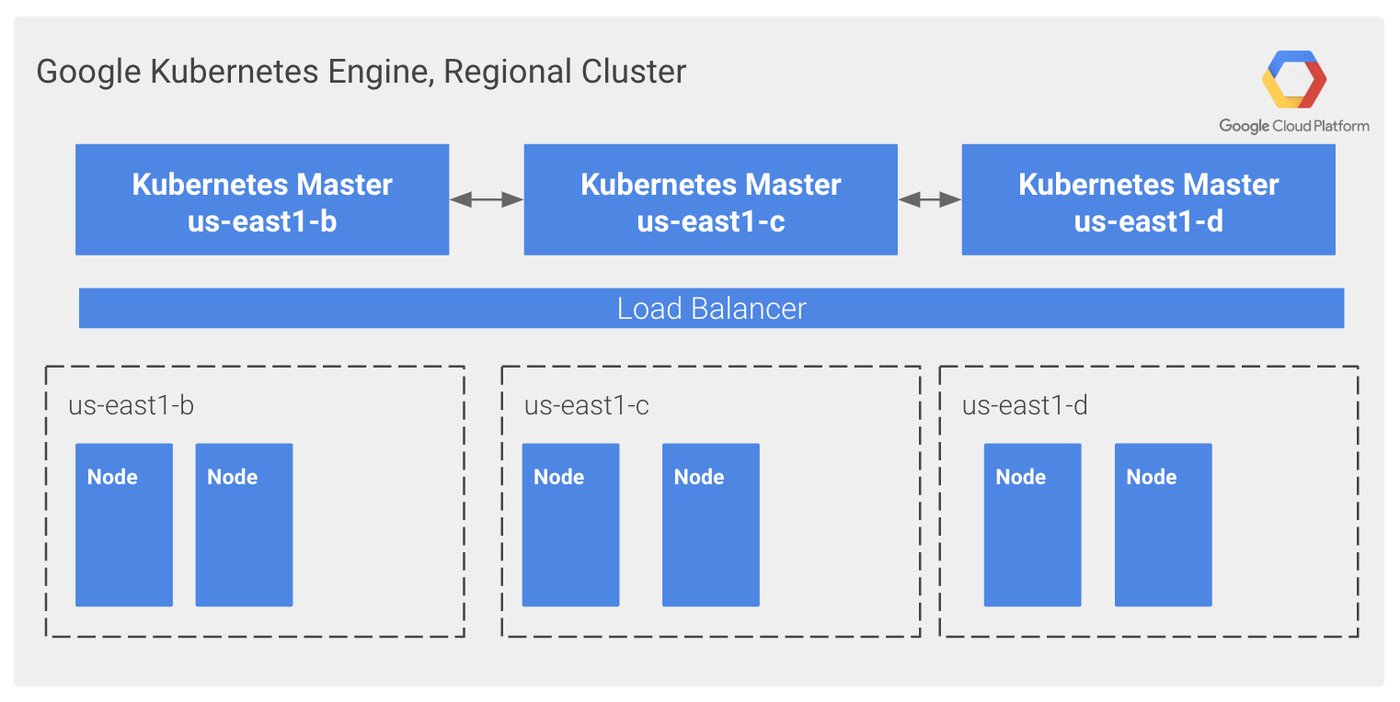Regional clusters in Google Kubernetes Engine are now generally available
Weston Hutchins
Product Manager, Google Kubernetes Engine
Editor's note: This is one of many posts on enterprise features you’ll find in Kubernetes Engine 1.10. For the full coverage, follow along here.
A highly available Kubernetes cluster is a key requirement for most production applications. However, adding this protection can be complex. We’ve consistently heard from Kubernetes users that creating and managing a high-availability Kubernetes cluster is no small feat. Keeping etcd (the key-value store) replicas in sync across zones, scaling your masters, and ensuring that your control plane is fronted by a resilient load balancer are just some of the challenges users face when maintaining their own highly available cluster.
Today we’re proud to announce the general availability of one of Google Kubernetes Engine's most requested enterprise-grade features: regional clusters. Regional clusters create a multi-master, highly-available Kubernetes cluster that spreads both the control plane and the nodes across multiple zones in the same region, allowing us to increase the control plane uptime to 99.95%. In addition to the increased availability, regional clusters give you a zero-downtime upgrade experience, so that your cluster is always available for deployments.
We’ve seen rapid adoption of regional clusters since we announced the beta, and with many users already running production workloads using regional clusters. In addition, we are pleased to announce today that regional clusters in Kubernetes Engine are available at no additional cost.
Get started with regional clusters
You can quickly create your first regional cluster using the Cloud Console or the gcloud command line tool.This creates a regional cluster in us-east1 with two nodes in each of the us-east1 zones.


By creating a regional cluster, you get:
- Resilience from single zone failure - Because your masters and application nodes are available across a region rather than a single zone, your Kubernetes cluster is still fully functional if an entire zone goes down.
- No downtime during master upgrades - Kubernetes Engine minimizes downtime during all Kubernetes master upgrades, but with a single master, some downtime is inevitable. By using regional clusters, the control plane remains online and available, even during upgrades.


